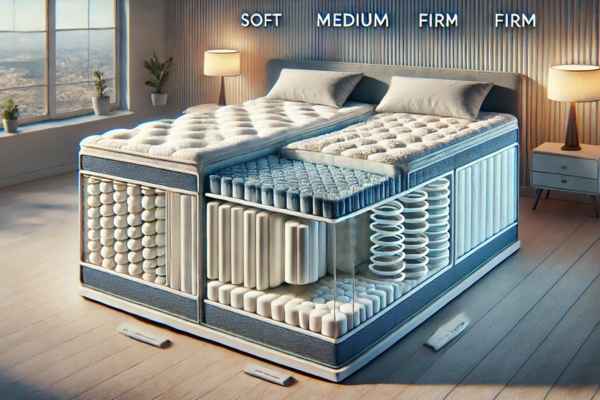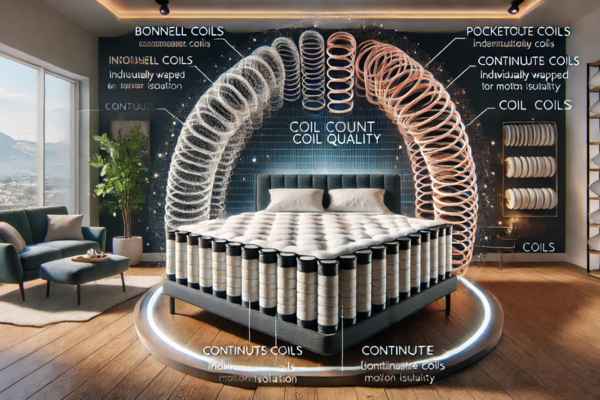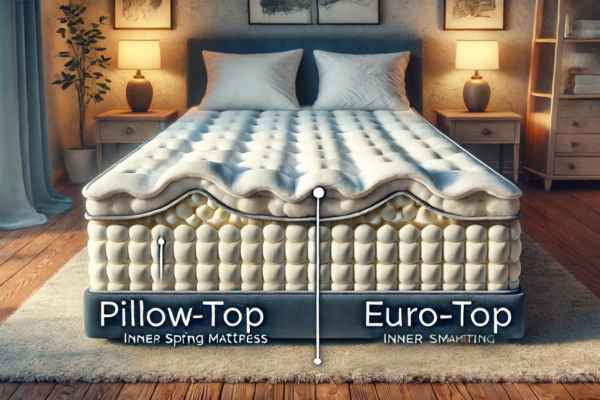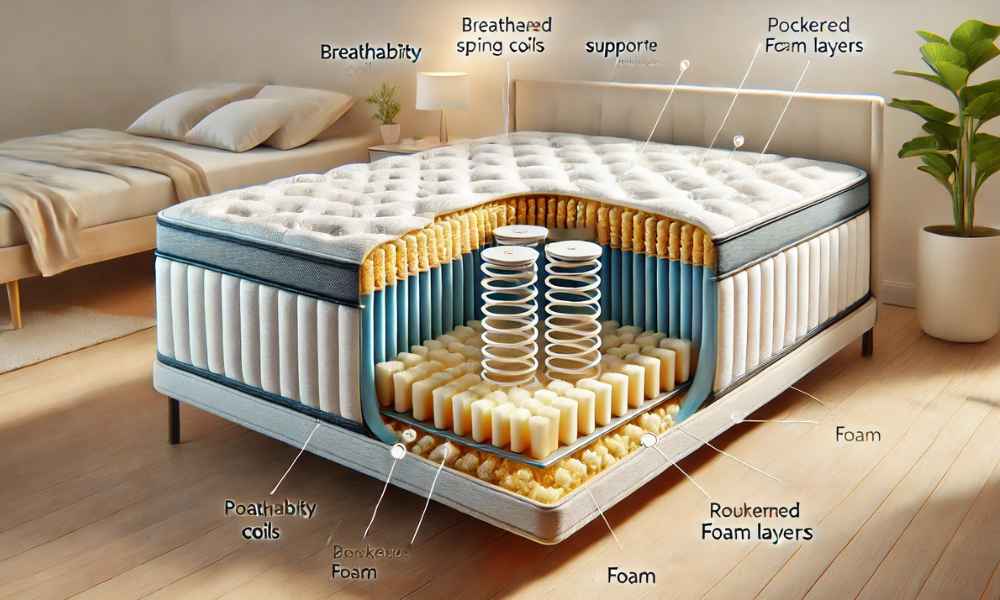A good night’s sleep is essential for overall well-being, and the mattress you choose plays a pivotal role in achieving restful slumber. Among the many types available, an inner spring mattress remains a staple in the bedding industry, offering both support and breathability. But what exactly is an inner spring mattress? How does it compare to modern alternatives like memory foam or hybrid mattresses? In this guide, we’ll unravel everything you need to know about inner spring mattresses—from their construction and firmness levels to the differences in coil quality. Whether you’re shopping for your first mattress or looking to replace an old one, this comprehensive guide will help you make an informed decision.
Understanding the Basics of an Inner Spring Mattress
An inner spring mattress is a type of bed that primarily relies on metal coils or springs for support. This traditional mattress design has been around for over a century and is still widely used due to its durability, affordability, and responsiveness.
At its core, an inner spring mattress consists of three primary components:
- The Support Core: The foundation of the mattress, made of steel coils that provide structural integrity.
- The Comfort Layer: A cushioning layer made from foam, cotton, or fiber that sits atop the coils for added comfort.
- The Cover: A fabric encasement that protects the layers beneath and contributes to the mattress’s overall feel.
One of the standout features of an inner spring mattress is its breathability. Unlike memory foam, which tends to retain heat, the open structure of the coil system allows for ample airflow, keeping sleepers cool throughout the night.
Choosing the Right Inner Spring Mattress for Your Needs
When shopping for an inner spring mattress, various factors should be taken into account, including coil type, firmness, and additional comfort features. Not all inner spring mattresses are created equal, so it’s important to match the mattress to your sleeping preferences and body needs.
Here are key considerations to keep in mind:
- Sleeping Position: Side sleepers generally prefer softer models, while back and stomach sleepers benefit from firmer support.
- Weight Considerations: Heavier individuals may require thicker coils or reinforced support for enhanced durability.
- Motion Isolation: If you share a bed, choosing a mattress with pocketed coils can reduce motion transfer and disturbances.
Firmness Levels Explained: Soft, Medium, and Firm Options

The firmness of an inner spring mattress dictates how it feels under your body. Mattresses typically fall into one of three categories:
- Soft: Plush and cushiony, best for side sleepers who need contouring around pressure points like the shoulders and hips.
- Medium: A balanced option that provides both comfort and support, suitable for most sleeping positions.
- Firm: Offers robust support with minimal give, making it ideal for stomach sleepers and those with back pain.
The firmness level is often influenced by the coil gauge (thickness of the metal springs). A lower gauge means thicker coils and a firmer feel, while a higher gauge indicates thinner coils and a softer feel.
Coil Count vs. Coil Quality: What Really Matters?

Many mattress shoppers assume that a higher coil count equates to a better mattress. While coil count does play a role in determining support, coil quality is an equally crucial factor.
- Coil Count: A good-quality inner spring mattress should have at least 600 coils in a queen size. Higher-end models may have over 1,000 coils for enhanced support.
- Coil Type: The type of coils used can drastically impact the mattress’s feel and longevity. Some common coil types include:
- Bonnell Coils: Hourglass-shaped and interconnected, offering bouncy yet affordable support.
- Pocketed Coils: Individually wrapped coils that reduce motion transfer, ideal for couples.
- Continuous Coils: A single wire is used to create multiple coils, increasing durability but limiting motion isolation.
- Offset Coils: Hinged coils that contour to the body better than Bonnell coils.
Rather than focusing solely on coil count, consider how the coils are constructed and how they work together to support your body.
Pillow-Top vs. Euro-Top: Do You Need Extra Cushioning?

Many inner spring mattresses come with added cushioning layers for extra comfort. Two popular options include:
- Pillow-Top: A plush, sewn-on layer that provides a cloud-like feel. The stitching creates a noticeable gap between the top layer and the mattress.
- Euro-Top: A denser, more uniform layer of padding that is stitched flush to the edges, offering a sleek appearance and firmer support.
Pillow-tops are ideal for sleepers who want an ultra-soft surface, while euro-tops provide a more balanced feel with slightly firmer support.
Comparing Inner Spring Mattresses to Memory Foam and Hybrid Options

With so many mattress types available, how does an inner spring mattress stack up against modern alternatives?
- Inner Spring vs. Memory Foam: Inner spring mattresses excel in breathability and responsiveness, while memory foam contours more closely to the body and isolates motion. However, memory foam tends to trap heat, which can be uncomfortable for hot sleepers.
- Inner Spring vs. Hybrid: A hybrid mattress combines coils with a thick comfort layer of memory foam or latex, providing the best of both worlds—support and contouring. However, hybrids tend to be more expensive than traditional inner spring models.
For those seeking a classic, budget-friendly mattress with ample support and cooling properties, an inner spring mattress remains a solid choice.
Benefits of an Inner Spring Mattress
One of the biggest advantages of an inner spring mattress is its superior breathability. The open-coil structure allows for significant airflow, preventing heat retention and helping to maintain a cool sleeping surface. This makes inner spring mattresses an excellent choice for those who tend to sleep hot. Additionally, inner spring mattresses provide strong support and spinal alignment. The coil system helps distribute body weight evenly, reducing pressure points and promoting proper posture during sleep. This is particularly beneficial for individuals who suffer from back pain, as a well-structured inner spring mattress can help alleviate discomfort. Durability is another strong point of inner spring mattresses. High-quality models can last seven to ten years with proper care, making them a cost-effective option. Unlike foam mattresses, which may sag over time, inner spring mattresses maintain their structure and support for longer periods.
Common Concerns and Drawbacks
While inner spring mattresses have numerous benefits, they also come with some drawbacks. One of the most common complaints is motion transfer. Since the coils are interconnected in many models, movement from one side of the bed can easily transfer to the other, which may disturb light sleepers. However, modern pocketed coil designs help reduce this issue significantly. Another concern is pressure point discomfort. Traditional inner spring mattresses can feel firmer than memory foam or latex alternatives, leading to discomfort in the shoulders and hips for side sleepers. To counteract this, many models now feature pillow-tops or additional comfort layers for extra cushioning. Additionally, spring noise can be an issue over time. As the coils age and wear down, they may start to produce squeaky sounds with movement. Regular maintenance and high-quality construction can help minimize this issue.
How to Maintain and Care for Your Inner Spring Mattress
To extend the lifespan of an inner spring mattress, proper care and maintenance are essential. One of the easiest ways to do this is by using a mattress protector, which helps shield against spills, dust mites, and allergens. Keeping the mattress clean not only improves hygiene but also preserves its structural integrity. Another key tip is rotating the mattress regularly. While some mattresses are designed to be flipped, most modern inner spring models should be rotated every three to six months to ensure even wear and prevent sagging. It’s also important to use a supportive bed frame. A weak or broken bed frame can compromise the integrity of the coils, leading to discomfort and reduced mattress longevity. Investing in a sturdy base ensures the mattress remains in good condition for years.
Inner Spring Mattress Myths and Misconceptions
There are several misconceptions surrounding inner spring mattresses that often lead to confusion among buyers. One common myth is that higher coil count automatically means better quality. While a higher coil count can provide better support, the type and thickness of the coils play an equally important role. A well-constructed mattress with fewer high-quality coils can outperform one with a high number of weak coils. Another misconception is that inner spring mattresses are outdated. While newer technologies like memory foam and hybrid designs have gained popularity, inner spring mattresses continue to evolve. Many modern models now incorporate advanced coil technology, motion isolation features, and plush comfort layers, making them competitive with other types of mattresses. Some people also believe that inner spring mattresses are too firm and uncomfortable. While older models may have been overly firm, today’s options come in various firmness levels, from soft to extra firm, catering to different sleeping preferences.
Conclusion
An inner spring mattress remains a reliable and widely used choice for sleepers who prefer breathability, support, and durability. While they may not provide the deep contouring of memory foam, they offer excellent spinal alignment and cooling benefits, making them ideal for many individuals. By understanding both the benefits and drawbacks, as well as following proper care techniques, you can ensure that your inner spring mattress delivers a comfortable and restful sleep experience for years to come. Whether you’re upgrading your bed or selecting a mattress for the first time, considering an inner spring model can be a smart and practical decision.
